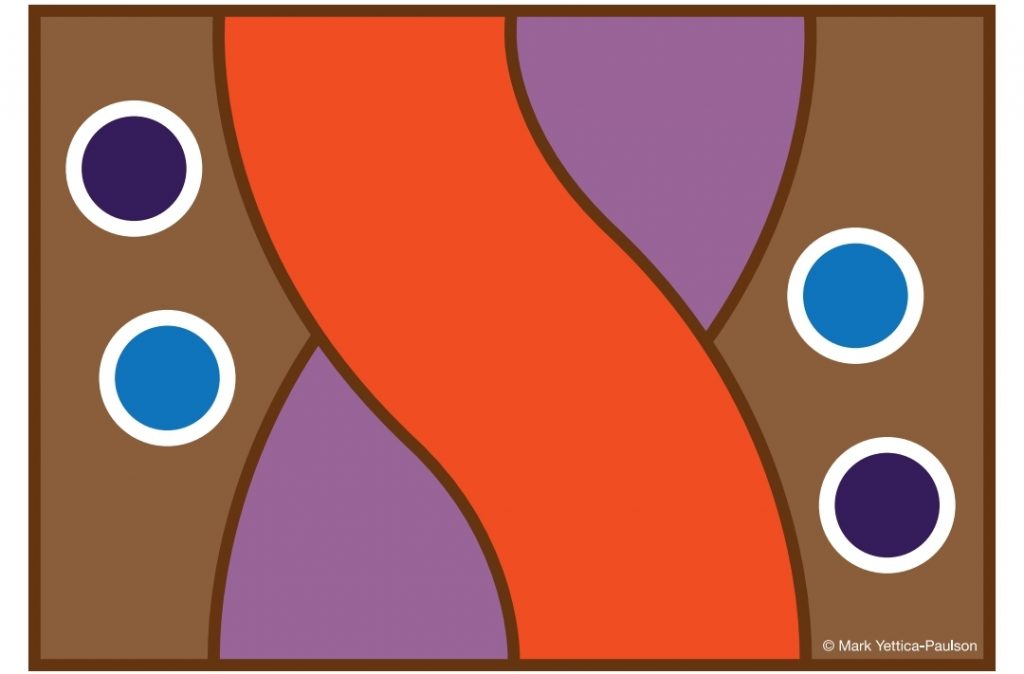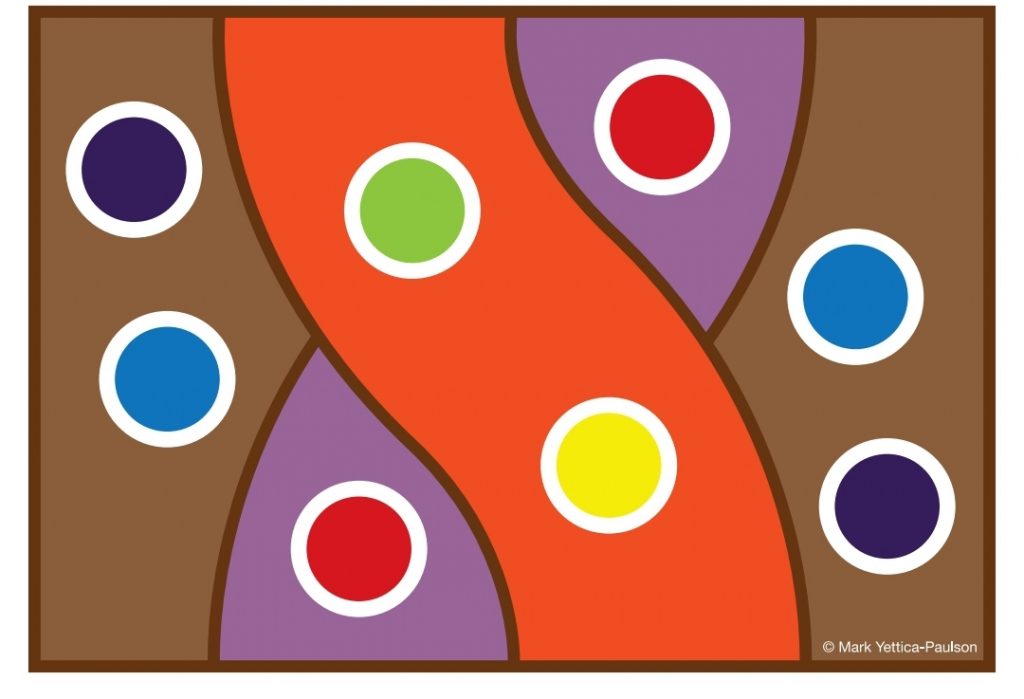The first step to understanding navigation of the Intercultural Framework is considering the background first. Each of the background colours represents a dimension of our cultural identity and our interactions with other cultures.
These 3 background elements are:
1) The Brown Land
2) The Light Purple Riverbanks
3) The Ochre Riverbed
What comes next in the Intercultural Framework? It is best to read about the ICF spaces in order. Continue next with:
– Deep Purple space of Cultural Memory, where we explore the concept that we all have an Ancient Memory filled with ceremonies, traditions, ancestors and culture.
– followed by the Blue Space of Cultural Practice, then
– Green Innovation Space and then the Connecting Tracks.
I wish to acknowledge the insight and partnership dialogue that I had working with John Huigen.
John was the CEO at Desert Knowledge Australia when we worked together on Intercultural
leadership. We were then, and remain now, united on the philosophy that leadership required both
First Nations and other Australians to work on their own awareness and understanding as well as
working together on the space in-between. It was John who first prompted the identification of the
Brown background space.
We also want to thank Peter Bergmeier for creating these digital versions of the Intercultural Framework for us to share on our social media and here on our blog.
The Brown Land – Our Daily Culture(s)

The Brown land area signifies the culture(s) that surrounds us every day. It seeks to highlight
the dynamic where we’re largely unaware of the world we inhabit until it is commented on,
challenged or threatened from another person or outside force.
You’ll notice this dynamic when someone from outside your lifestyle and culture asks you about why
you do certain traditions and behaviours. If you have not been raised to have an understanding of
the traditions and you have not developed a way to explain them externally, you might respond
with, “I don’t know, we just do it this way?” Or perhaps you might hear others say, “I’m not sure, it’s what I’ve grown up with?”
This background area is important to identify in the Intercultural Framework because each of us
carry our complex identities, histories and stories of belonging in this space, but we don’t necessarily investigate, explain or critique them. Of course, there are some cultures that do cultivate their own awareness and understanding of their Brown land area. They have well developed understandings and articulations based on their own investigation, explanation and critical analysis of this space.
The Light Purple Riverbanks, Awareness of Cultural Difference

The Light Purple Riverbanks signify the awareness of cultural difference surrounding oneself.
It highlights the point where we need to interact across cultures and identities. You’ll notice this dynamic when you recognise difference and your reactions to it. You might find, for example, that you need to concentrate more on the context surrounding you so that you are mindful and respectful of the cultures and bodies around you. In this space, you are required to think and act differently to your familiar ways.
This background area is important to identify in the Intercultural Framework because it helps us with
being more conscious and mindful about working with difference.
The Ochre Riverbed, The Meeting Space

The Ochre Riverbed signifies the meeting space for cultures and identities. It seeks to
highlight the dynamic where we join together to collaborate, combine, partner and innovate while
bringing the best of our cultures and identities. You’ll see this when you are working alongside people with different cultures and identities and you are able to collaborate, make decisions and get things done! Working well in The Ochre Riverbed area takes time. When you are making progress here, it is a culmination of work on our own awareness, learning about difference and appreciating knowledge about other cultures. It is also acceptance of other identities and a willingness to realise outcomes that are good enough for us to move forward.
Conclusion – Get the basics right first

We know that any knowledge system has basics to learn first. The background areas of the
Intercultural Framework are the first steps that need to be grasped before we start sharing
more knowledge and understanding about the other spaces on the framework. This work cannot be overlooked or skipped and is just as critical as the spaces that will be explained in the following posts. These initial but key understandings, requires each of us to be aware of the cultures that surrounds us and affirms our identity and belonging. We need to be mindful of the contexts where we are confronting differences in culture and identities. We should also be conscious of our reactions and how we process that difference as well. Finally, we need to understand that working well with differences in culture and identities requires time and effort. However, when we are working well together, we can create ideas, actions and outcomes that are far better than we could have created on our own.
So my questions for you are:
1- How aware are you of the culture that surrounds you and informs your identity?
2- What are your default reactions when you are confronted with difference?
3- How effective are you in collaborating with others when there is a lot of difference in cultures and identities?
Read about the Deep Purple space of Cultural Memory next.
For more information and how this can be applied to your workplace and context, please contact us.
Peace & Power
Mark Yettica-Paulson






